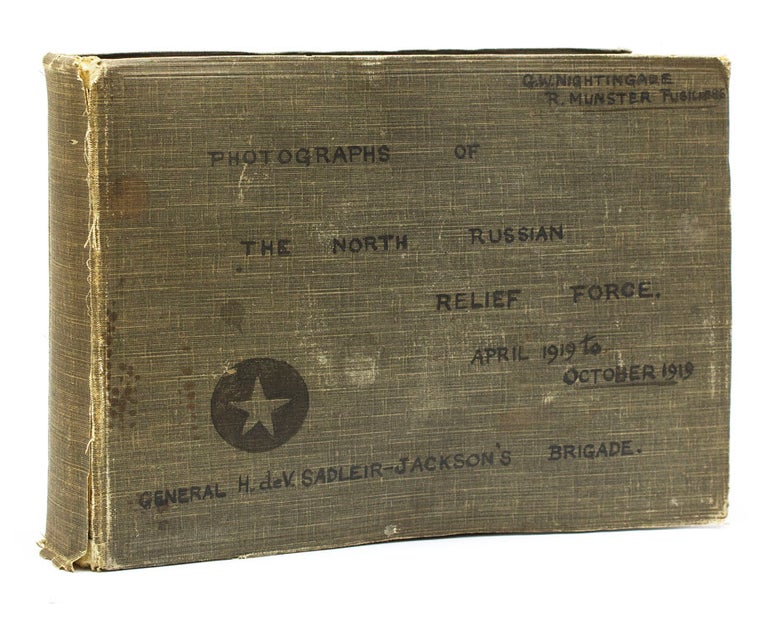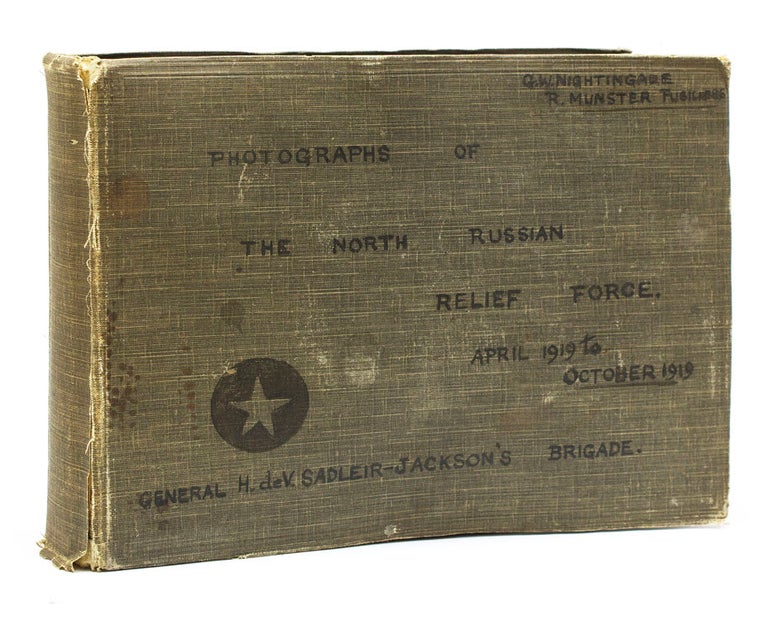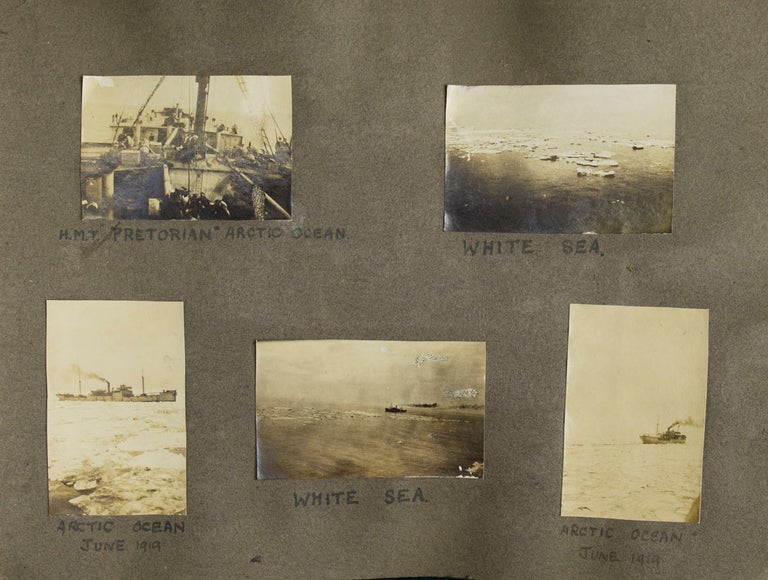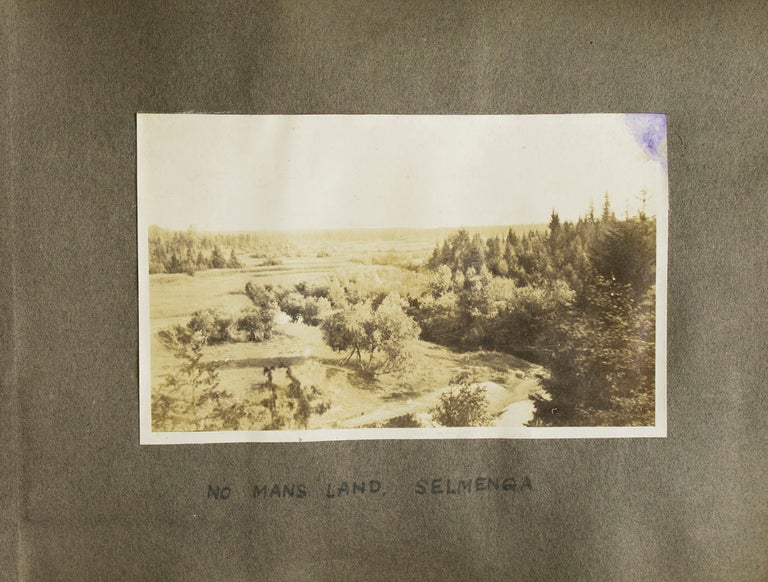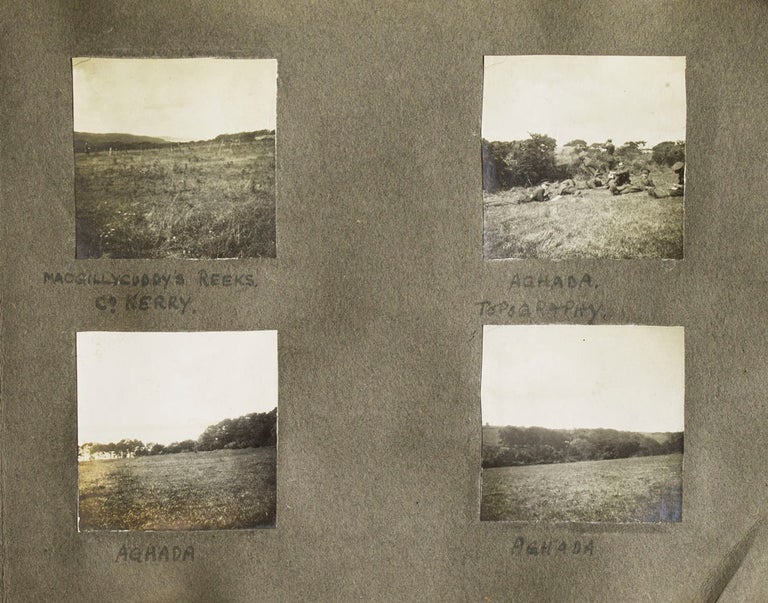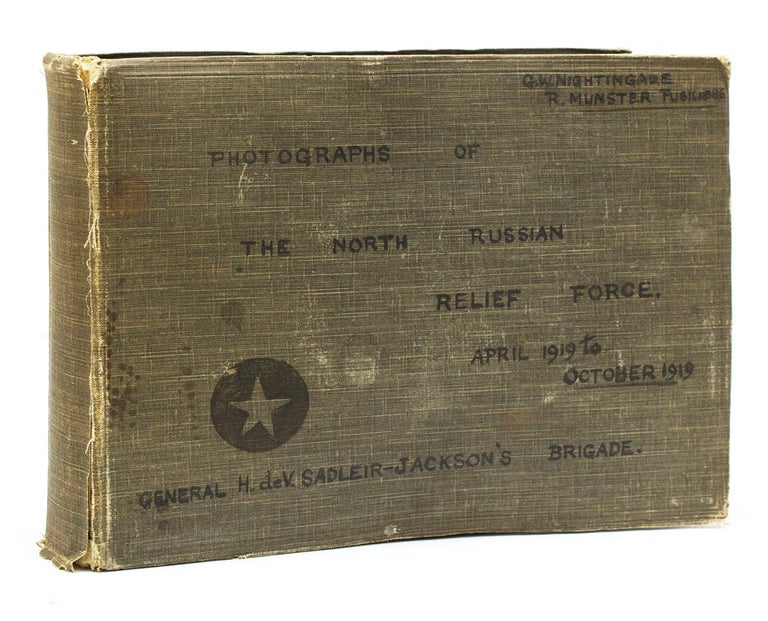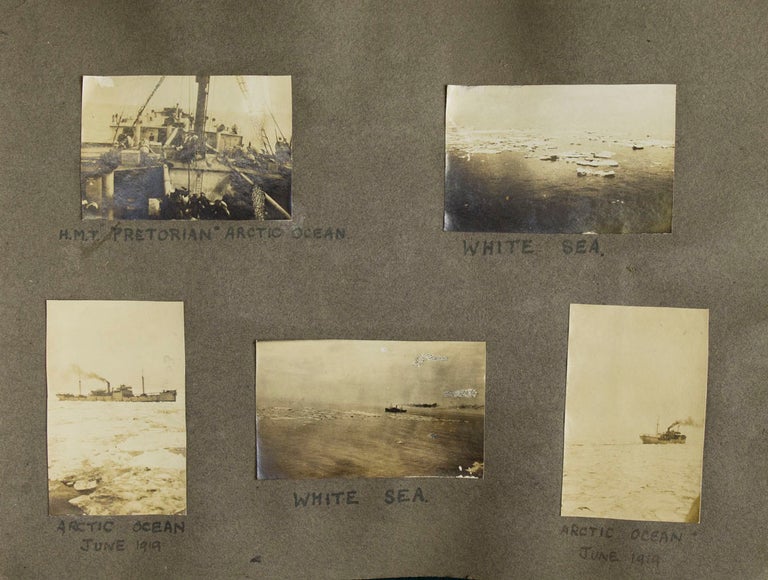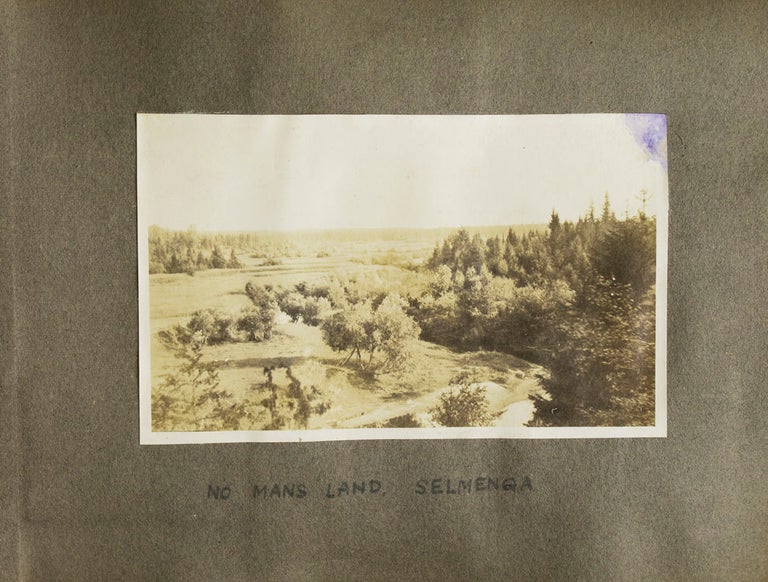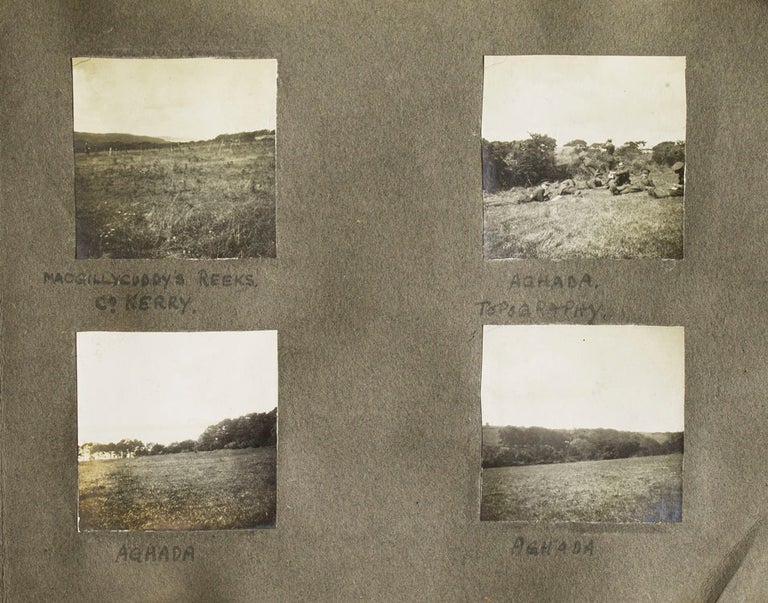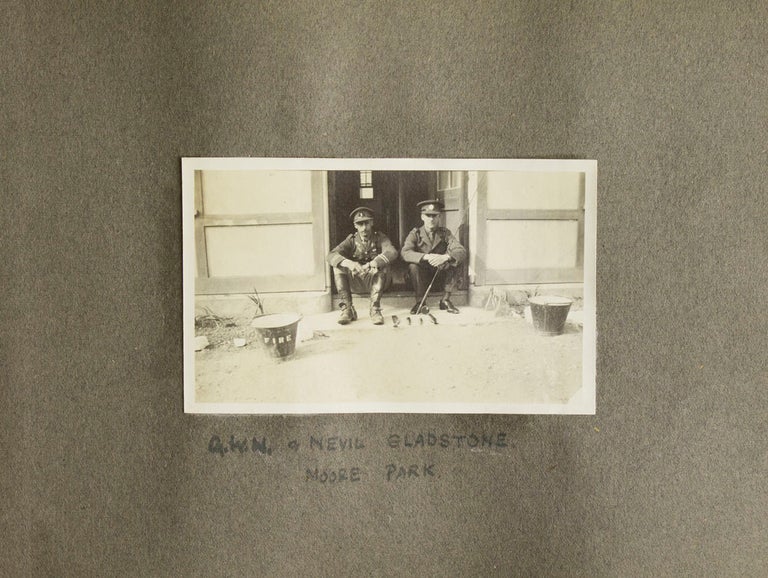RARE PHOTOGRAPHS OF THE NORTH RUSSIAN RELIEF FORCE 1919
"Photographs of the North Russian Relief Force. April 1919 to October 1919. General H. deV. Sadleir-Jackson's Brigade." Approximately 100 snapshots, mounted and captioned in ink. Typed order bearing the ink stamp "Russian Relief Force" dated 9 September 1919 laid down.
April 1919 to October 1919.
Price: $5,000.00
About the item
Photographs measuring 6 x 4 inches and smaller. 1 vols. Oblong 8vo (8 3/4 x 6 1/2 inches). RARE PHOTOGRAPHS OF THE NORTH RUSSIAN RELIEF FORCE 1919. Contemporary gray cloth, ms. title to upper board, upper joint wearing but holding nicely.
Item #22303
A rare survival from a distinguished World War One veteran. Born in India, Nightingale was educated at Rugby and Sandhurst and joined the Royal Fusiliers in 1910. He survived the landing on V beach (Cape Helles, Gallipoli) April 25th, 1915, and the following year he was awarded both the Military Cross and the Legion D'Honneur for his services.
Nightingale subsequently served with the 46th Battalion Royal Fusiliers in the North Russian Relief Force, part of the invasion of Russia by the English, Irish and the Americans. The operation was conducted under the command of General H. de V. Sadleir-Jackson.
Arriving in Archangel on 5 June 1919, the 46th proceeded along the Dvina River to Osinova where preparations were made for an attack on rail and river transport. The objective was to repel the Red Army from their established positions and generally improve the position of the White Russian forces. The hope was that the NRRF would be able to subsequently withdraw without significant casualties. In addition, smaller raids on Red Army positions were carried out to the south, partly to destabilize them, partly as reconnaissance. Nightingale was in command of the Borok Column on the right bank of the Dvina River for the August 10 offensive.
The first photos are of the H.M.T. "War Summit" & H.M.T. "Pretorian" chugging through the Arctic Ocean and White Sea in Midsummer, June 1919 on its way to Archangel. They were billeted at Troitsa and among the many images of the town and its surroundings is one of where the mutiny of Dyer's Battalion took place. Equally, there are shots of Russian batteries, Allied defenses, company headquarters and regimental aid posts, as well as images of the Dvina River, Yaroslovskoe and Selso. A page is devoted to "Col. Davies Headquarters at Commencement of Action Aug 10th" and shows how the British troops organized themselves in the Selmenga Forest, namely with three shots of "Piccadilly Circus (Selmenga Forest) with Shaftesbury Avenue and Regent Street."
The attack commenced at noon and, despite the difficulty of the terrain, was successful. We know that Borok (Nightingale's objective) was reported captured, along with 80 POWs, by eleven o'clock that evening. Nightingale was evacuated in late September.
This is not only a record of the battle but includes many poignant personal touches too. Namely, there are several shots of men with whom he served and the Russians with whom he stayed. The captions not only name the men in each photograph, but in many cases reveal their fate: "Lt Taylor (killed Aug 10th) Lt Grant (wounded Aug 1st) Capt. Driver (killed Aug 10th)."
The album also includes a typed order — dated September 9, 1919 — which is a reminder that, despite the success of the August attack, the Russian Civil War was ongoing and would ultimately be won by the Bolsheviks. "You will send one platoon to SELMENGA to hold the SELMENGA BRIDGE and the beach road to GORODOK. The enemy are known to be in force in the vicinity of BOROK and GORODOK and may attempt an outflanking movement … The platoon remain in position there, and will withdraw when Captain de Miremont with the GORODOK Infantry comes through there tonight … The Platoon should form a right flank guard to Captain de Miremont from SALMENGA to PLESS."
The photographs of Russia occupy the first half of the album, the rest is devoted to Nightingale's time in Ireland with the 7th Cadet Battalion. Despite his distinguished service in the military, Nightingale's fate was a melancholy one. He died in 1935, reportedly either by suicide (using his own revolver) of from alcoholism.

